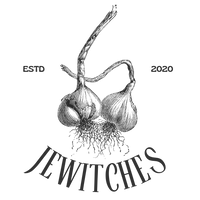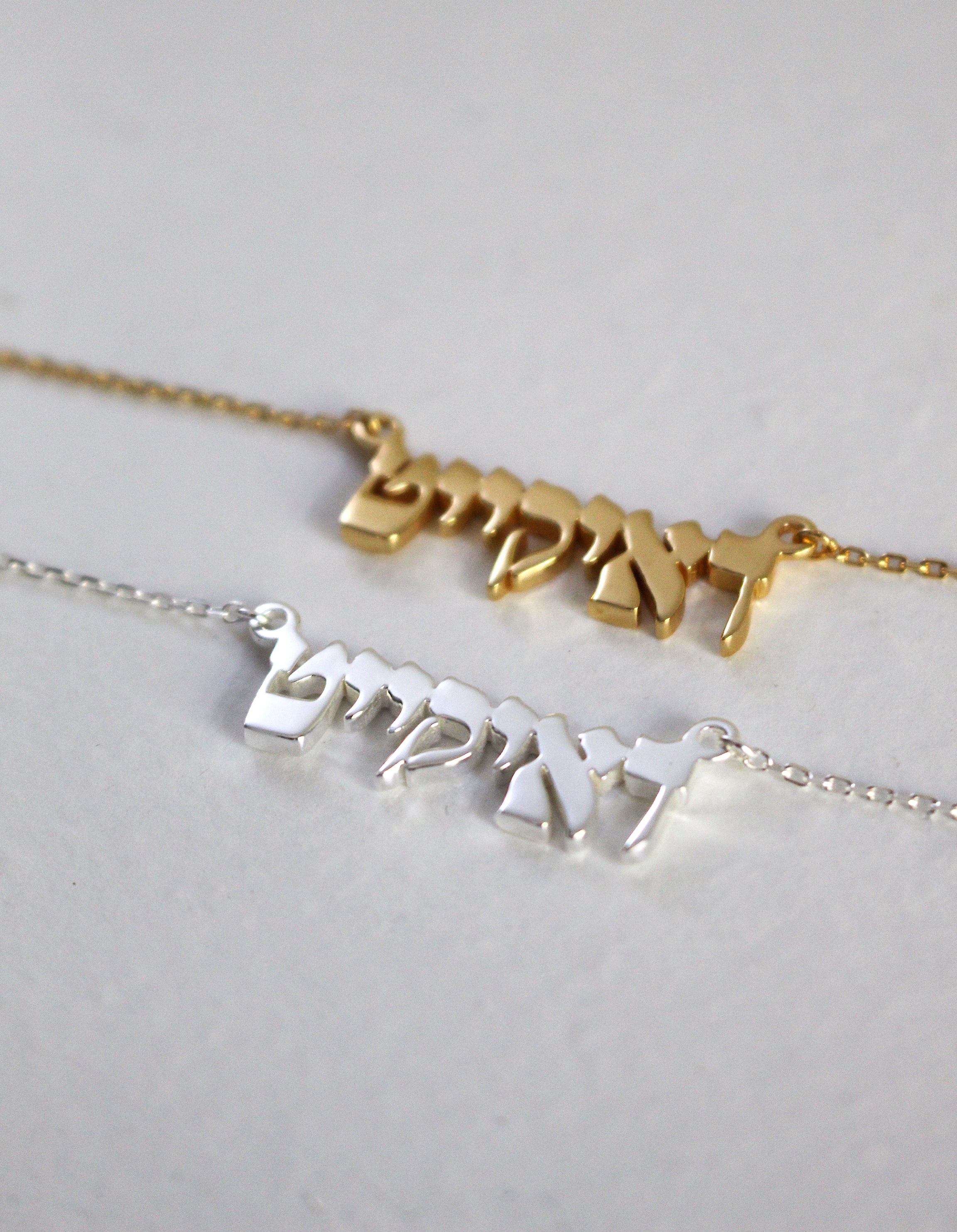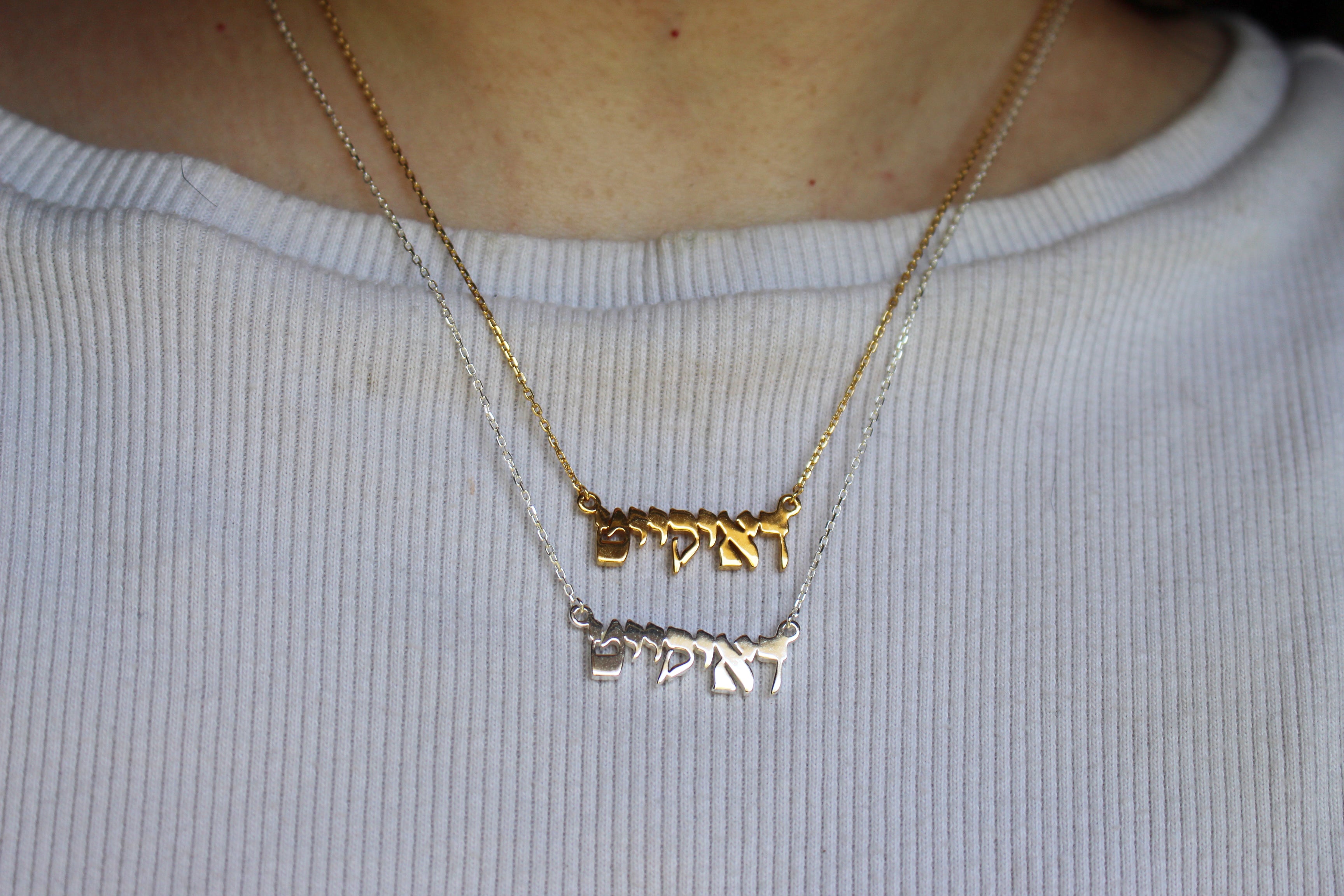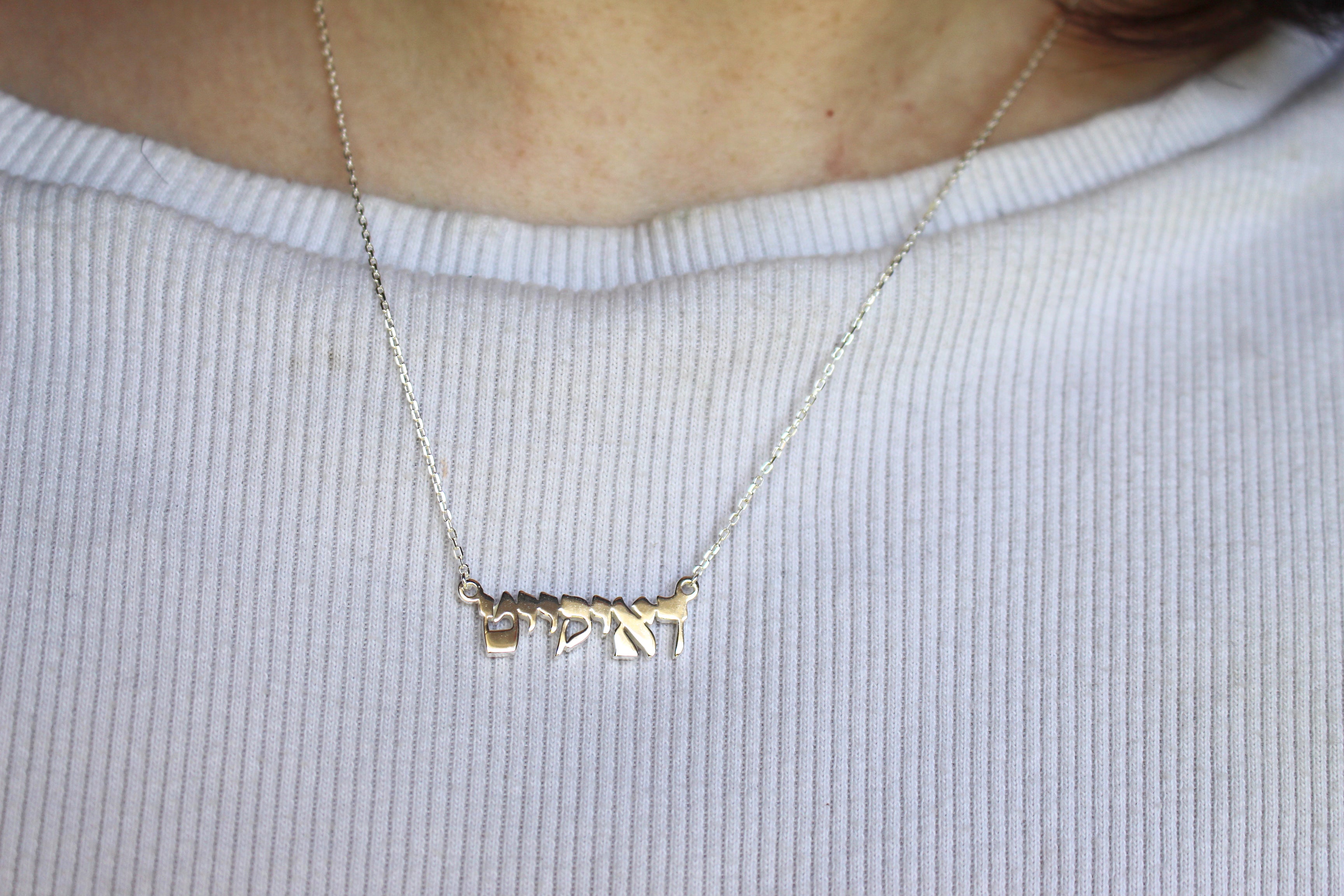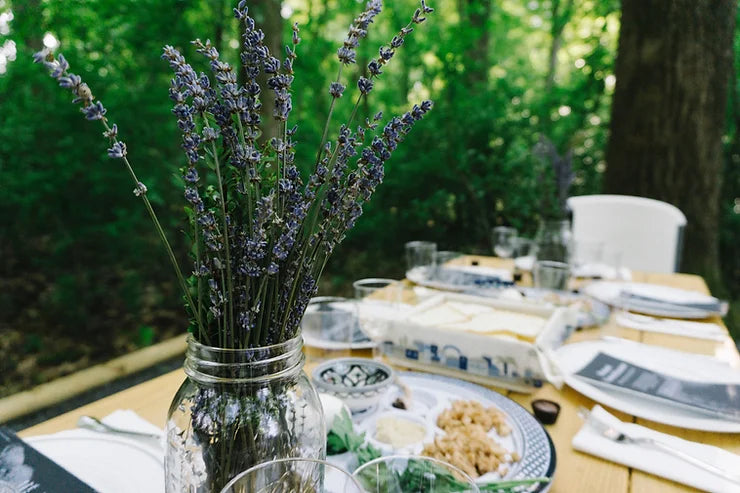Passover, also known as Pesach, is one of the most important of the Jewish holidays. Some even assert that it is the most important. While there is no consensus on that topic, it is one of the most observed by American Jews. A 2014 study tells us that more than 70% of American Jews participate in a Seder while only 50% fast for Yom Kippur and only 20% keep Kosher². Even if you don't regularly observe Jewish holidays, chances are, you're going to acknowledge Passover.
We mark the occasion with great festivity and ritual. For those who do not engage in Jewish ritual regularly, the yearly Seder is a wondrous means of reconnecting with the magic of Jewish custom.
As usual, this article is but an introduction, not a wholly encompassing article on every aspect of Passover.

The Exodus
One of our three ancient Israelite pilgrimage festivals, Pesach was one of the times Jews traveled to the Beit Hamikdash in order to offer sacrifices. Pesach acknowledges and celebrates the story of the Exodus: Jews freeing themselves from bondage and fleeing ancient Egypt through the mighty hand of G-d. The name “Passover” comes from the 10th plague unleashed at Pharaoh's refusal to release the Jews from bondage: the killing of the firstborns. Jews used hyssop and blood to mark their front doors, and the Angel of Death ‘passed over’ their homes.
The ten plagues were as follows:
-
Water turning to blood
-
Frogs
-
Lice
-
Flies
-
Pestilence
-
Boils
-
Hail
-
Locusts
-
Darkness
-
Killing of firstborn children.
The Divine: Overt and Covert
Purim is a story of the covert nature of HaShem: Shekhinah. In Pesach, we most often only see the overt examples of HaShem. HaShem creates the ten plagues, turns staffs into snakes, and sends an angel in the form of a burning bush to push Moshe into becoming who he is meant to be, even when he fights back (and he most definitely fights back). But if we look closer, we also see that Pesach is filled with the Divine Presence of Shekhinah.
The women of the story of Pesach are rarely mentioned, their names excluded from traditional Haggadot: Shifra, Puah, Yocheved, Batya, Miriam, and Zipporah. The National Council of Jewish Women offers a supplemental Haggadah for the Seder, which highlights the first five women.
Shifra and Puah: When the Pharaoh decreed the murder of all newborn baby males, Shifra and Puah did not ‘just follow orders’. But rather, they stood their ground; lying to their ruler, declaring that they simply couldn’t get to the births in time, and it was because of this that the Jewish infants survived. It is believed that it was Shekhinah, the Divine Presence, that spoke and imbued them with the strength to follow their beliefs.
Yocheved: The mother of Moshe, Miriam, and Aaron, she birthed her children and cared for them as best she could in a world that sought to oppress and destroy them. When Moshe could no longer be hidden, she placed him in a reed basket and floated him down the Nile, trusting in HaShem that he would be safe.
Batya: The daughter of the Pharaoh, Batya is often not named. In Jewish history, she is a figure of immense courage, faith, and majesty. The Midrash tells of how HaShem sent her to the Nile to bathe and brought her attention to Moshe. Her heart was good and kind, and so she sought to reach for him, to draw him towards her out of the water (hence his name, meaning drawn from the water). But the story tells that her arm was not long enough, so HaShem performed a miracle, and her arm was miraculously lengthened, and she had the ability to retrieve him. In our Midrashim, it teaches us that her handmaidens remind her of her father’s decrees which forbid her from rescuing the infant, but she still chooses to save him.
She raised Moshe as her own, and our Midrashim teach us that she was given the name Batya (daughter of HaShem) because of how her actions led to the liberation of the House of Israel, which she became part of.
“God told her: “Moses was not your son, yet you called him your son; you are not My daughter, but I call you My daughter” (Lev. Rabbah 1:3).”¹⁴
Miriam: The weight born by the eldest daughter is intergenerational. She was but a child, but she knew her burden and her path: she was a protector, a prophetess, a wise woman, and a matriarch. Shekhinah guided her down the river, watching her brother float in his reed basket, bobbing in the current. She approached the Pharoah’s daughter after he had been pulled out; cunningly offering up their mother as a wetnurse, reuniting mother and son for a while more. She watched over her brother as an infant and again as a man. As the Israelites fled, she led the way, timbrel in hand; Holy joy, sacred music, and dance her rebellion.
Zipporah: The wife of Moses, Zipporah saves the life of Moses as they travel with their son from the home of her father. “Now he was on the way, in an inn, that the L‑rd met him and sought to put him to death. So, Zipporah took a sharp stone and severed her son's foreskin and cast it to his feet...” Exodus 4:24
Chometz
During Passover, Jews abstain from Chametz (alternatively spelled chometz), meaning "any food product made from wheat, barley, rye, oats or spelt that has come into contact with water and been allowed to ferment and “rise.”⁴. Most Ashkenazi tradition also sees legumes and rice as prohibited due to their status as kitniyot, while most Sephardic custom does not.
Matzah
Controversial though the flavor (and texture) of matzoh may be, it is an important part of the Passover ritual.
Made of flour and water (and sometimes a pinch of salt), matzah is an unleavened flat bread.
While you are more than welcome to purchase it at your local shop, making it yourself can be a meditative addition to your Passover preparation. In order to be kosher for Pesach, the matzoh must be completed within 18 minutes--as anything after that would break the prohibition of leavened breads. This means that the entire process (from mixing to baking) must be done in under that 18-minute mark.

Regular Matzah
1 cup all-purpose flour
1/3 cup water
1/2 teaspoon salt
-
Preheat the oven to 450°F. Place a baking sheet in the oven.
-
Knead into a stiff dough. Roll out thinly into small rounds. Use a matzo roller or a fork to poke holes in it all the way through.
-
Remove the baking sheet from the oven and place the matzo on it. Return to oven and bake until crispy on one side, about 2 minutes.
-
Flip and bake until crispy, about 2 minutes.
-
Enjoy!

Schmurah Matzoh vs Regular Matzoh vs Unkosher for Passover Matzoh
Schmurah (meaning ‘watched’) matzoh is a kind of matzoh that has been watched from seed to shelf--literally. Aptly named, it is carefully made under specific supervision to follow Exodus 12:17, which states: “You shall guard the matzot.” It is watched from the time of harvesting, storage, milling, grinding, kneading, shaping into circles, rolled out, baked, and boxed up. Schmurah Matzoh is the preferred matzoh for the Seder for many Jews.
Regular Matzoh is the kind of matzoh you can find in your market that states it is kosher for Passover, or made at home, that is made of salt, water, and flour. It is usually square. It’s delicious (or not, depending on who you ask!) and usually far more uniform than schmurah matzoh.
Unkosher for Passover Matzoh is a conundrum in and of itself--but it exists. They are version of square matzoh that are not kosher for Passover and cannot be used during the Passover seder in accordance with the rules and traditions of many Jewish communities. Be cautious when purchasing your matzoh so you don’t end up with a box of useless matzoh.
Cleansing for Pesach
Spring cleaning isn’t just swapping out your winter wardrobe for lighter knits: it also means preparing your home and space for Pesach by removing any and all chametz. While there is no technical law that requires you to clean, the most popular methodology of removing all leavened particles is through giving your home a thorough scrub down from top to bottom. This also allows you to prep and reset your space for the months ahead. Depending on your traditions, this can include varying levels of intensity. For example, it is customary for Kurdish Jews to repaint before Pesach. ⁹ For industrial kitchens, it isn’t uncommon to see a rabbi with a blowtorch going to town to prepare for Pesach.
On the eve 14th of Nisan, it is tradition to search the house high and low for chametz. Known as Erev Pesach, it is customary to do so by candlelight, with a feather and wooden spoon in hand, using the two to remove any and all remainders of chametz. Then, once we've completely swept our homes clean, we place everything (feather, spoon, and chametz) in a paper bag. The next day, we light it on fire and let it burn. These three stages are known as bedikat hametz, or the search for chametz, bittul hametz, or the nullification of chametz, and finally, bi-ur hametz, the destruction of chametz³.
It is a tradition of some to hide ten pieces of chametz throughout the house so that when these blessings are said, they are said over found chametz⁷; rather than wasted. It is recommended that these pieces be wrapped up so that no crumbs are left behind.
When all the chametz has been located, a Bracha (blessing) is said,
Praised are you, Sovereign our G-d, Ruler of the Universe, who has sanctified us through their commandments, commanding us to remove all chametz.
Once the search is finished, the bittul formula is recited,
“Kol Chamira De’Ika Birshuti De’La Chazitei U’dla Bi’artei Livtil Velehevei Ke’Afra De’Ar’ah.”
This declaration of non-ownership is intentional. According to Michael Strassfeld, it is not as the action of removal that is most important, but rather the intention (Kavanah).
The next morning is the time to destroy all the chametz. While there are non-incendiary methods (breaking up the bread and spreading it to the wind, rendering it inedible with chemicals, etc.), burning it is the most common. It also accounts for the tradition of burning the wooden spoon and feather. Once it has burned, the following blessing is recited.
All leaven in my possession, whether I have seen it or not, whether I have removed it or not, is hereby nullified and ownerless as the dust of the earth.
This is a less common kavanah that is at times announced with the following recitation:
Sovereign, our G-d and the G-d of our ancestors, just as I have removed all chametz from my home and from my ownership, so may it be Your will that I merit the removal of the evil inclination from my heart.
But we don't just have to burn the chametz and the candle, feather, and spoon. We can burn all that we no longer wish to have in our homes, in our lives, in our spirits, in ourselves.
As you go through your home, even if you don't stop eating chametz, take a candle and a feather and walk through your home, cleansing your space.
Here are some suggestions for what to leave behind:
-
Fear
-
Anxiety
-
Imposter Syndrome
-
Stress
-
Unworthiness
-
Negative energies that serve no purpose
-
Belief systems that no longer serve you
The Ram Moon
Pesach begins on the night that the Israelites left Egypt: the night of the Full Moon in Aries. In Jewish astrology, Aries is known as Taleh. The ram is also referenced as the lamb. “Aries, the lamb, symbolizes the unity of the collective, for in a flock of lambs each feels itself identical with the other. Also, just as sheep follow the shepherd, the Jewish people accept the authority of Moshe.”¹⁶ The Jewish calendar is a lunar-solar calendar, with the new moon marking the new month. Pesach begins at the swelling of the moon, at its fullest, and it won’t be for quite a time (until after Shavuot) that there will be a day without a holiday or without a special mitzvah.

Lighting Candles
Like many Jewish holidays, Passover begins with the lighting of candles.
If not on Shabbat, this is the prayer that is recited:
Bah-rookh ah-tah ah-doh-noi eh-loh-hay-noo meh-lekh hah-oh-lahm ah-sher ki-deh-shah-noo beh-mitz-voh-tahv veh-tzee-vah-noo leh-hahd-lik nayr shehl yohm tohv.
בָּרוּךְ אַתָּה אֲ-דֹנָי אֱ-לֹהֵינוּ מֶלֶךְ הָעוֹלָם, אֲשֶׁר קִדְּשָׁנוּ בְּמִצְוֹתָיו, וְצִוָּנוּ לְהַדְלִיק נֵר שֶׁל יוֹם טוֹב
Blessed are You, Sovereign, our G‑d, King of the universe, who has sanctified us with Their commandments, and commanded us to kindle the Yom Tov light.
Cups of Elijah, Miriam, and Ruth
It is said that when the Moshiach (messiah) has arrived, the prophet Eliyahu Hanavi will arrive and herald the age of the Moshiach. Because of this, we leave an untouched glass of wine for him and the door open; a place set for him to come and sit at our tables across the globe, coaxing in the new age. Hopeful that with every deed, we come closer to the announcement of the coming of the Moshiach.
The Prophetess Miriam is given a goblet as, without her, we would not have been led from slavery in Egypt. Unlike Elijah, the Cup of Miriam is filled with water to represent the Well of Miriam that provided water for the Jews in the desert⁵.
Ruth, the first convert, was the great-grandmother of King David, from whose line the Moshiach will come. It is a new tradition to place a cup for Ruth, to honor her and all those who follow her, and enter Judaism by choice. All our souls were at Mt. Sinai, and honoring the return home is a tradition worth including⁶.
Seder Plate
The seder plate is a dish steeped in tradition for many Jewish communities. It is a ritualistic representation of the story of Passover, where every item has meaning. Generally, each item will have a labeled place on the seder plate. Though food placed on the Seder plate will not be consumed, all but the Beitzah and Zeroa will be eaten throughout the seder. However, it is important to note that not all Jewish communities utilize plates--Yemenite communities utilize the entire table, artfully arranging to each items across the table; while Tunisian Jews traditionally utilize a reed basket to hearken to Moshe’s journey in the Nile. ⁹
On the Seder plate, you will generally find the following...
Karpas
A green vegetable like parsley to represent spring. This will be dipped in salt water.
Haroset
A mixture of apples, nuts, wine, dates, figs, and spices, though the particular blend varies by Diasporic tradition. It is meant to represent the mortar used by Jewish slaves in Egypt. It is also a contrast to the bitter maror.
Maror
Bitter herbs represent the bitterness of slavery in Egypt. This is most commonly found as horseradish, but the ideal bitter herb is lettuce. Some specify that Romaine is the preferred variety. This is to represent that the bitterness is not only bitter---lettuce can be tender and sweet, but the white stems within it are bitter and taint the entirety of the bite. While romaine is preferable, horseradish, endive, or escarole are also permissible.
Beitzah
A roasted egg is a symbol of the sacrifice in the Temple if it were to still be standing. The egg should be boiled and then scorched while still in the shell. For vegans, some will use replacements like avocado pits, oranges, or brussels sprouts.
Zeroa
Roasted bone, most commonly a shank bone, is another symbol of sacrifice. Like the egg, the shank bone is roasted and scorched. For vegans, the Gemara suggests using a beet as it represents the blood of the animals.
Salt Water
Though not always strictly on the Seder plate, keeping a bowl of salt water for dipping is required to represent the tears of the Jews while enslaved.
Orange
An orange on a seder plate has a living legend attached to it. Susannah Heschel (daughter of Rabbi Abraham Joshua Heschel) an acclaimed scholar and feminist, is credited with the inclusion of the orange on the plate. Often you will hear a story of how she was told, “A woman belongs on the bimah as much as an orange on a seder plate!” The bimah refers to the podium where the Torah is read in the synagogue. But the orange has a much queerer story. Heschel “chose an orange because it suggests the fruitfulness for all Jews when lesbians and gay men are contributing and active members of Jewish life,” ⁸
But despite her specific inclusion for queer Jews (including spitting out seeds to rebuke homophobia!), the story changed.
“Somehow, though, the typical patriarchal maneuver occurred: My idea of an orange and my intention of affirming lesbians and gay men were transformed. Now the story circulates that a man said to me that a woman belongs on the bimah [podium of a synagogue] as an orange on the seder plate. A woman’s words are attributed to a man, and the affirmation of lesbians and gay men is erased. Isn’t that precisely what’s happened over the centuries to women’s ideas?”⁸
Garlic
Garlic has been added to the Seder plate as representative of “life-affirming protection, a symbol of ancestral healing in service to collective liberation and abolition that holds all life as precious”¹
Initiated by Dori Midnight and Sol Weiss, you can download the Garlic on a Seder Plate Haggadah here.
Olive
An olive can be added to your seder plate as a representative of peace, liberation, and freedom in Palestine. “Because for millennia the olive branch has been the symbol of peace, and we seek to make peace where there has been war.¹³

Passover Seder
The most complicated of the Passover rituals, the Passover Seder generally follows a set number of steps. However, depending on the tradition and movement, the order of the seder may vary. Some may have very long, involved seders, while others may choose a shorter version. There are also Seders with themes: social justice, feminism, abolition, etc.
Creating a meaningful Seder is a great way to connect with Passover as a whole. what do you want to honor in your seder? What do you want to highlight?
The Haggadah is the guiding text for the Seder, but there are many variations. You can find a number of options online that align with the spirit of the intention of the seder that you intend to host.
As you move through your seder, don't forget to recline! It is a tradition to recline and relax, as in ancient times, this was a symbol of a free person.
The Magic of the Afikomen
The afikomen is a piece of matzoh broken off during the seder and set aside to be eaten at the end of the meal. In most seders, it comes from the center of three ritual matzot, while on seders where only two matzot are used (as done by some Yemenite Jews, for example), breaks off a portion of the bottom matzoh¹¹. In some communities, it is hidden during the seder and children go on an epic (or not so epic) quest to find the hidden piece.
However, after the Seder, these pieces of afikoman become powerful protective amulets for Jews across the Diaspora. “Afikomen, a specially designated cake of unleavened bread at the Passover seder, as an amulet, hanging it in the house, or carrying it in a pouch, to protect one against evil spirits and against evil men”. ¹²
“Kept safe, and sometimes even suitably preserved, these would serve over the ensuing months as protection from the dangers that might lie in wait for travelers, and could help with many problems, including mice. They were one elements of procedures used to protect children from the evil eye, and would be placed under the child’s pillow along with a few grains of salt. The Afikoman was also particularly sought after as a charm for carrying a pregnancy to term, and for ensuring an easy birth.”
The afikomen isn’t merely protective, however: Kurdish Jews have a tradition of tying it to the arm of a son with the blessing, “May you so tie the ketubah to the arm of your bride”. It is cited that Jews of Hebron have a similar tradition.¹¹ Another folk belief is that if kept for seven years, the afikomen can be thrown into a rushing river to prevent a flood.
The Questions of 10
The number ten is one that we see reflected greatly during Pessach. It is a complete number, according to Kabbalah. There are 10 plagues, and it is believed the world was created in 10 utterances. There are 10 commandments, which include all 613 mitzvot within them. There are also 10 qualities of HaShem reflected in the Sefirot.
Over the ten days of Passover, we are afforded a great time to think, reflect, and look inwards. During this time, we offer 10 questions to ponder and should you choose, to journal about.
-
What does liberation look like to you?
-
How do you work towards liberation?
-
What is holding you back from true freedom and liberation?
-
How have the experiences of your ancestors impacted the way you view justice?
-
How do the experiences of your ancestors impact your daily life?
-
What are a few things that you would like to tell, ask, or communicate with your ancestors?
-
What bitterness (maror) and sweetness (charoset) do you have in your life?
-
What are the things you are releasing or have released through the burning of chametz?
-
What are some of the ways that you can work towards bringing more joy, sweetness, and peace into your life?
-
We often say "next year in Jerusalem", in the same vein, what are some things that you want to achieve, accomplish, or embody in the next year?
Chag Pesach Sameach, may you all have a joyous and fulfilling Pesach!
Sources:
-
https://www.chabad.org/library/article_cdo/aid/1172862/jewish/The-Feather-the-Spoon-and-the-Candle.htm
-
https://www.chabad.org/multimedia/video_cdo/aid/4357661/jewish/The-Kabbalah-of-Pesach.htm
-
The Jewish Holidays: a guide and commentary by Michael Strassfeld
-
https://www.chabad.org/holidays/passover/pesach_cdo/aid/1742/jewish/What-Is-Chametz.htm
-
https://www.myjewishlearning.com/article/miriams-cup/
-
https://www.myjewishlearning.com/2017/03/29/ruths-cup-a-new-passover-ritual-honoring-jewish-diversity/
-
https://www.chabad.org/holidays/passover/pesach_cdo/aid/870652/jewish/Why-scatter-10-pieces-of-bread.htm
-
https://www.myjewishlearning.com/article/an-orange-on-the-seder-plate/
-
https://www.myjewishlearning.com/article/10-passover-customs-from-around-the-world/
-
https://dorimidnight.com/uncategorized/garlic-on-the-seder-plate-haggadah-supplement/
-
https://www.jewishvirtuallibrary.org/the-afikoman
-
Jewish Magic and Superstition: A Study in Folk Religion by Joshua Trachtenberg
-
https://www.haggadot.com/haggadah/freedom-seder-earth-0
-
https://jwa.org/encyclopedia/article/daughter-of-pharaoh-midrash-and-aggadah
-
https://jwa.org/encyclopedia/article/zipporah-midrash-and-aggadah
-
Above the Zodiac: Astrology in Jewish Thought
